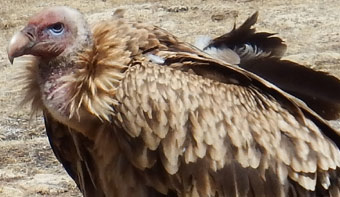Vultures represent 23 Species, split into two major groups; New World and Old World Vultures. These two families are not closely related, but are similar because of convergent evolution due to occupying similar ecological niches.
New World Vultures – family Cathartidae
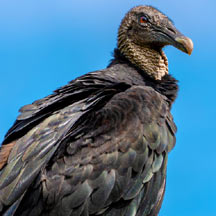 |
Black Vulture, Coragyps atratus Also known as: American black vulture |
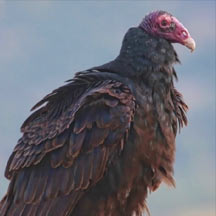 |
Turkey Vulture, Cathartes aura Also known as: Turkey buzzard, Buzzard, John crow, Carrion crow |
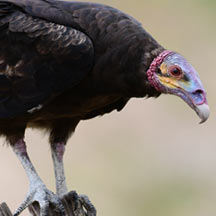 |
Lesser Yellow-headed Vulture, Cathartes burrovianus Also known as: Savannah vulture |
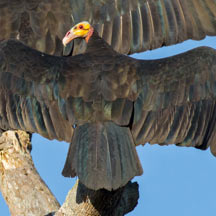 |
Greater Yellow-headed Vulture, Cathartes melambrotus Also known as: Forest vulture |
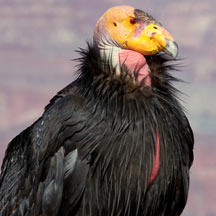 |
California Condor, Gymnogyps californianus |
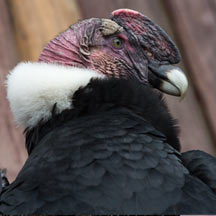 |
Andean Condor, Vultur gryphus Also known as: Great Condor, South American Condor |
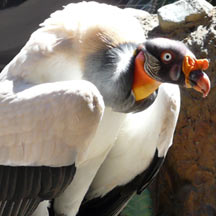 |
King Vulture, Sarcoramphus papa |
Old World Vultures – family Accipitridae
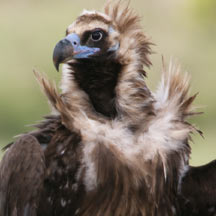 |
Cinereous Vulture, Aegypius monachus Also known as: Black vulture, Eurasian black vulture, Monk vulture |
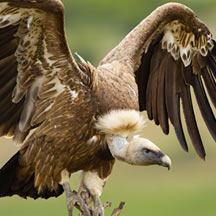 |
Griffon Vulture, Gyps fulvus Also known as: Eurasian griffon vulture |
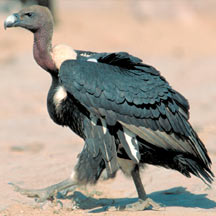 |
White-rumped Vulture, Gyps bengalensis Also known as: Oriental white-backed vulture |
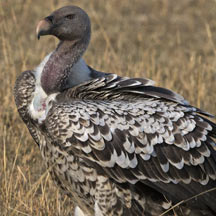 |
Rüppell’s Vulture, Gyps rueppelli Also known as: Rüppell’s griffon, Rueppell’s griffon, Rüppell’s griffin, Rueppell’s vulture |
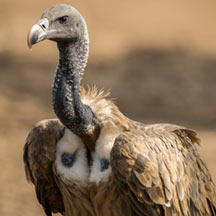 |
Indian Vulture, Gyps indicus |
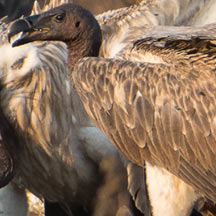 |
Slender-billed Vulture, Gyps tenuirostris Also known as: Long-billed vulture |
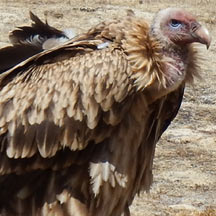 |
Himalayan Vulture, Gyps himalayensis Also known as: Himalayan griffon vulture |
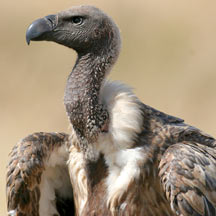 |
White-backed Vulture, Gyps africanus Also known as: African white-backed vulture |
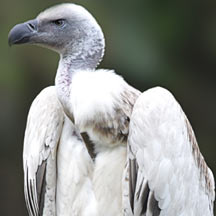 |
Cape Vulture, Gyps coprotheres Also known as: Cape Griffon, Kolbe’s vulture |
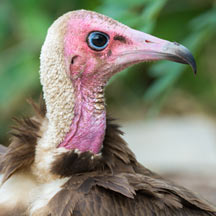 |
Hooded Vulture, Necrosyrtes monachus |
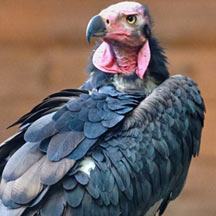 |
Red-headed Vulture, Sarcogyps calvus Also known as: Pondicherry vulture, Asian king vulture, Indian black vulture |
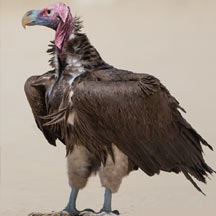 |
Lappet-faced Vulture, Torgos tracheliotos Also known as: Nubian Vulture |
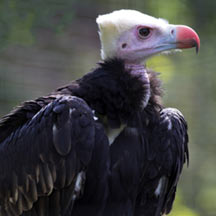 |
White-headed Vulture, Trigonoceps occipitalis |
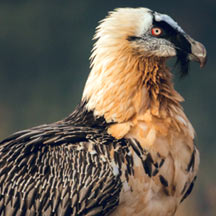 |
Bearded Vulture, Gypaetus barbatus Also known as: Lammergeier, Lammergeyer, Ossifrage |
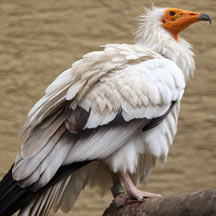 |
Egyptian Vulture, Neophron percnopterus Also known as: White scavenger vulture, Pharaoh’s chicken |
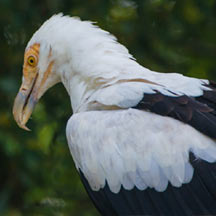 |
Palm-nut Vulture, Gypohierax angolensis Also known as: Vulturine fish eagle |
Threats to Vultures
There are many reasons that vultures are increasingly endangered; worldwide they are hunted for meat or traditional ‘medicine’, are poisoned purposefully because they alert authorities to poached kills, die when eating poison-laced bait meant for other predators. They’re poisoned when eating lead used by hunters and shot because they are blamed for livestock deaths (most of the time, unfairly). They hit electrical lines or wind turbines, get hit by cars (often when trying to clean up roadkill), and they starve to death in spreading industrialized, urbanized areas where livestock is increasingly kept in confinement and wild prey has disappeared.
Vultures suffer habitat loss because of human activity, and habitat degradation by chemicals such as DDT and other pesticides, which can result in fatally thin eggshells or build up over time to weaken adult birds. In India, the catastrophic downfall of vultures is thought to be caused chiefly by a single, widely used veterinary drug, a cattle painkiller called diclofenac. The combination of all these factors, and many others, account for the drastic reduction in global vulture populations. They should be seen as a dramatic call-to-action; we need to conserve these birds before they are lost forever.
